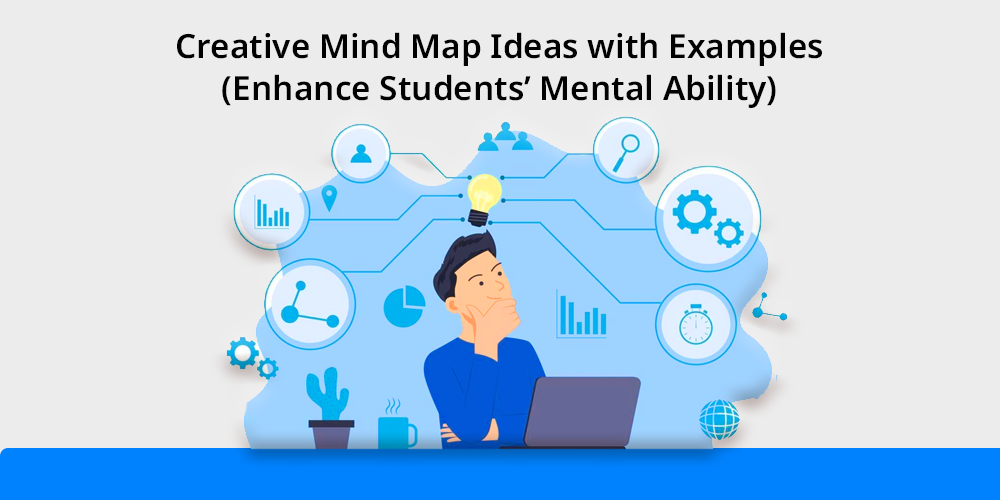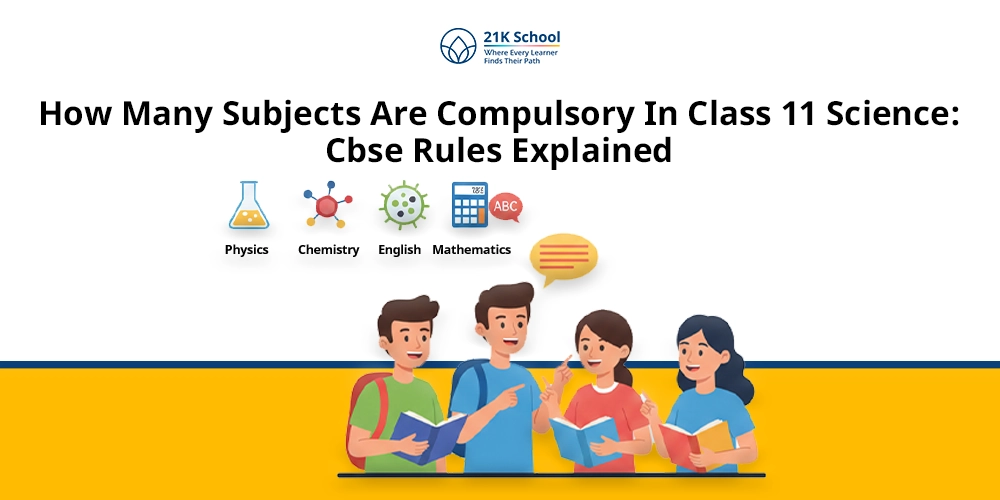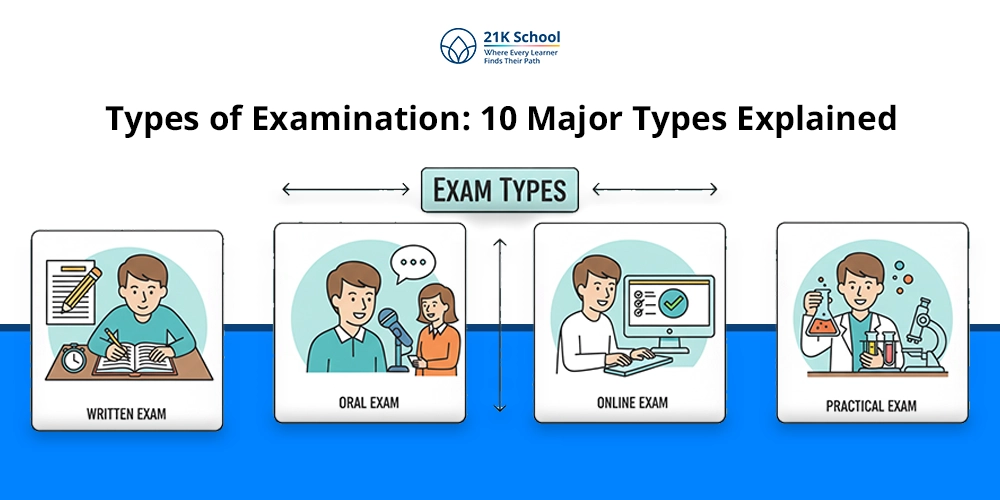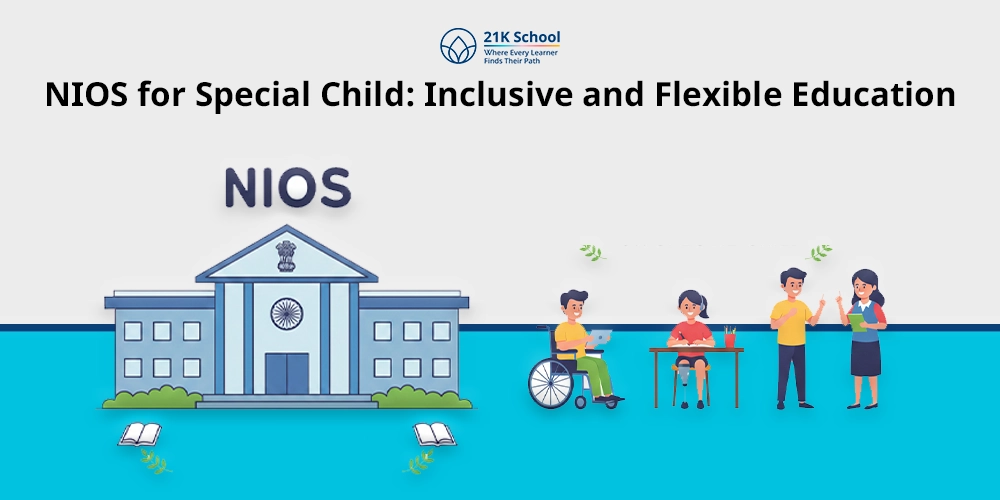
If your child forgets the topics so quickly and wants to find an effective way, here is how mind mapping helps them.
Mind Map serves in the visualisation of any topic, which enables kids to memorise for a longer period of time. Mind Map assist students to grasp the knowledge more effectively, as some students find it difficult to memorise any topics due to a lack of interest or other issues.
Mind Mapping is an incredible source to promote students’ mental health through templates, pictures, catalogues, visuals, etc.
Through mind mapping, kids can effectively learn difficult subjects such as Maths, Science, English, EVS, etc.
This enables them to effectively engage in the learning process. A creative mind map also helps students to enhance a deeper understanding of knowledge. It further serves in understanding mindfulness and how to apply it in the classroom.
Mind Mapping serves in understanding theoretical and practical approaches to learning, and fosters in enhancement of critical thinking skills among students as well.
Table of Contents
What is Mind Mapping?
Mind Mapping is a visual representation of topics and hypotheses through that kids can grasp context more easily and serves in memorising them. Mind Maps include any form of visual representation, such as images, graphics, charts, diagrams, templates, etc.
Mind Mapping is a fun learning approach that makes kids understand the hypothesis by developing new ideas and acquiring existing knowledge in simpler terms.
Mindmap is essential for students who have difficulty in understanding hypotheses in any subject, such as English, Maths, Science, History and so on.
Mind Mapping assists in organising their work and studies in a single period of time. Mind Mapping also enables promoting inclusive education through effective strategies of knowledge sharing.
15 Amazing Mind Map Ideas for Students
Mind Mapping enables students to effectively engage in practical experience. Mindmap also helps in promoting lifelong learning and enhances the teaching and learning process.
There are various mind mapping activities that allow students to effectively memorise every concept of education in a simple and easy manner.
Mind Mapping skills also enable students to create new solutions and research on existing knowledge. Below you can check amazing mind mapping ideas for students.
1. Brainstorming
Brainstorming mind mapping is an incredible way to understand the theory more effectively. Brainstorming makes it easy to set goals, prepare plans, and make new decisions, that facilitates in achieving flow in education.
Brainstorming mapping enables working in a group for every individual to come up with ideas and develop new learning opportunities. Brainstorming includes group activities, event planning, mindfulness and so on.
- Example: Through brainstorming, kids can effectively learn new contexts through ideas, concepts, characteristics, etc. Children can use brainstorming to create new strategies for solving skills, and innovative ideas.
2. Note-taking
Note-taking is an incredible idea to enhance the learning process. Note-taking facilitates in enhancing creativity and making one think critically. Writing notes for any subjects and topics allows us to memorise the tough things.
Note taking also encourages sharing ideas among peers, which helps in promoting peer to peer education, which is known for enhancing knowledge sharing.
- Example: Children can effectively write notes, summaries, highlight important points, and refer to sections for effectiveness in education. Through this, students grasp difficult concepts more easily.
3. Memorisation
Memorising mind maps support in understanding the topics and information more easily. Memorising dates, names, and history from the text is very difficult, it becomes easy to understand the topics without any conflict.
Mind Mapping enables us to memorise any information through visualisation for a longer period of time. Memorising content can be done in any learning style as there is no fixed pattern to memorise it.
- Example: Memorising any information through visualisation supports in grasping knowledge more effectively. Children should remember any information through using short terms for longer periods of retention.
4. Group Reading
Reading books is an incredible mind mapping activity through which students can enhance their learning process and enable them to understand the story in a short period of time.
Through mind mapping, students can engage in group activities such as group reading.
Through book reading, individuals can understand the characters and their relationships, group reading enables students to share each other’s understanding and foresee the plot of the story, which develops a habit of mind among them.
- Example: Children’s reading in groups allows them to engage in the oral and visual context of grasping ideas. While group reading senior students can support their juniors to effectively get proper support.
5. Test Revision
Test revision is an amazing mind mapping technique that enables students to effectively grasp contexts without any backlash.
Students can revise their tests multiple times; this will help them develop an image of it, and they can recall the last-minute questions.
Revision allows for the identification of the contexts of topics and helps in generating new ideas. Know more on the revision ideas here.
- Example: Children must revise their exam topics before appearing for the test. Revision helps in acquiring last minute knowledge and develops effectiveness.
6. Learn a New Language
Learning a new language is an incredible way to engage in mind mapping techniques. Learning a new language improves the cognitive development of children, which facilitates memorising the theories more easily.
New language also facilitates enhancing vocabulary and grammar. Learning a foreign language facilitates better understanding and keeps the mind more active, and develops curiosity.
- Example: Students can learn new languages nationally and internationally, such as English, Hindi, Japanese, French, Chinese, etc. They can use various software such as Duolingo, busuu, Google Translate, etc., to enhance their efficiency.
7. Test Grammar
Taking grammar tests and enhancing grammar skills allows students to develop vocabulary skills. Memorising basic grammar rules facilitates understanding language skills.
Grammar mind map assists in memorising short words and jumping words, also allows kids to write any content without any hindrances.
While the importance of grammar in English is prominent, students can test their grammar skills easily. It is possible through books, software, e-learning platforms, and so on.
- Example: Grammar is the most important aspect for writing content. Students should focus on enhancing their grammatical skills to understand clauses, verbs, nouns, prepositions, etc.
8. Essay Writing
Essay Writing also aids in outlining the structure of content, as well as supports students to grasp concepts more effectively. Essay writing aids in doing a more detailed analysis of content.
Essay writing is an incredible way to enhance the learning outcome; essay writing aid in brainstorming and allows for the development of critical thinking skills.
This is very useful in memorising long form context, especially literature and language. It is also advisable to check handwriting tips for better writing.
- Example: Children should write essays related to various topics, also enhances their vocabulary and writing skills. Students should start writing fewer words, such as 500 or later they can increase the word count.
9. Trip Planning
While trip planning, it is ideal to create a mind map, as well as gives a guide to the entire trip and aids in building an image of the itinerary.
Mind Mapping of trip plans allows individuals to think from the subconscious mind, also promotes in building social emotional learning as well as enhancing learning outcomes.
Mind maps are effective in memorising the places and distances, and allow for effectiveness. This also aids in getting practical experience through memorising short paths.
- Example: Planning short and long trips aids in developing brain mapping. Children should utilise weekends by planning trips to different cities and states.
10. Lab Reports
One of the effective ways to create a mind map is through lab reports. Lab reports support in understanding the hypothesis of results; it also allow them to create and develop experiments and understand the complexity of the processes.
Mind mapping techniques support in elaborating the contexts and give simple approaches to memorisation.
- Example: Students should focus on lab reports before implementing new knowledge. For science experiments on chemistry, physics and biology, aid students to grasp the concepts more effectively.
11. Language Vocabulary
Mind Mapping also assists in enhancing vocabulary, as every theme of mind mapping allows kids to understand the words and phrases effectively.
As templates, pictures, catalogue, visuals, etc., allow students to make content more memorable and allow students to effectively engage in the learning process.
Through mind mapping, kids will understand the differences between synonyms, antonyms, phrases, and grammar, as the importance of language skills aids in enhancing the effectiveness of language vocabulary.
- Example: Students should focus on developing vocabulary skills through language learning. Language learning and writing aid students in enhancing their vocabulary.
12. Geography Location Mapping
Geography location mapping enables students to memorise locations and places quickly. Mind Mapping of locations assists us in working efficiently and aids in building and enhancing visual learning.
Geographical maps include symbols, signs, and visuals that allow students to memorise the location and places quickly.
- Example: Students can do map pointing on Indian and world maps, also facilitates them to understand the location and places. They can mark any states, cities or towns also facilitate them in achieving knowledge.
13. Objective Setting
Mind Mapping facilitates in breaking down the objectives of any context, which helps to take actionable steps.
Goal-setting mindmap is an incredible approach for holistic education, as well as faciliates students to develop effective time management skills and prepare a proper study plan.
Objective mind mapping acts as an indicator to track the progress of education more efficiently.
- Example: Students can set their goals and objectives related to any task or activity. Objectives help them to develop motivation and self-esteem among kids.
14. Exam Preparation
An exam preparation mind map facilitates in preparing an effective study routine for exam preparation. Mind Mapping assists in giving central ideas about the exam strategies, that helps in enhancing creativity and critical thinking skills.
Mind Mapping of exam strategies gives an idea about the topics and gives clarity on positive learning aspects.
- Example: Students should prepare their exams effectively through proper time management. Exam preparation is an effective mind mapping example. Through exam preparation, students can perform better in exams.
15. Speech Preparation
Speech preparation in mind mapping facilitates in boosting efficacy and provides students with proper feedback. Mind Mapping helps in speech preparation through outlining key points of the speech.
It assist students to remark on their understanding level and helps in developing new ideas and conclusions.
- Example: Students can prepare their speech on any topic, participating in speech competitions and activities, that assist them to develop vocabulary skills and enhance students’ communication skills.
Benefits of Mind Mapping
Mind Mapping facilitates understanding topics more easily with the support of visuals and symbols. There are various types of mind maps that allow students to effectively enhance their learning outcomes.
Mindmap enhances creativity, comprehensiveness and assists in developing new ideas and information, as well as facilitates the teaching and learning process.
Here are the benefits of mind mapping mentioned below.
1. Enhance Collaboration
Mind Map assists students to share and explore ideas, knowledge and experiences with others.
A mindmap makes memorising long topics in a simple manner it allowing individuals to deeply understand the concepts.
Mindmap makes topics easy to understand, and supports every child to engage in a collaborative learning environment.
2. Promotes Learning Efficiency
Mind Mapping facilitates students to grasp difficult topics in a simple manner. Mind mapping includes a visual representation and assists in understanding difficult topics more efficiently.
Mind Map assist kids memorise long information into short form topics for a longer period of time.
3. Improves Retention
Mind Mapping facilitates in improving knowledge retention, through mind mapping kids become more focused and better listeners.
Mind mapping includes visual representation, as well as supporting them to connect with their subjects more efficiently. This leads to quick memorisation of questions and information without any conflict.
4. Enhance Problem-Solving Abilities
Mind Mapping helps in enhancing logical thinking skills, which are essential for promoting problem-solving skills. Mind Map enables people to visualise issues and deconstruct them into smaller more manageable parts.
It facilitates in development more detailed analyses of content and actively create a positive learning environment.
5. Reduce Stress
Mind Mapping assist in reducing exam stress by breaking down the big problems into simpler ones.
Visualisation aids in grasping knowledge more effectively as compared to the rote method, as well as encourages students to understand tough concepts in an easy manner, and thus it facilitates in reducing stress and anxiety.
Steps to Create a Mindmap
Creating a mind map is effective for better outcomes, which encourages in enhancing the learning methods.
To create a mind map, it is essential for students to follow some steps, which promotes in building perfect mind map strategies. Here are the steps that you can follow to create a mind map.
1. Start with a Simple Idea
Start creating a mindmap by a simple and central idea. Simple ideas can be anything, such as ideas, main themes, objectives, questions, etc.
This guide in understanding the core problems and creating new ideas to develop creative thinking skills.
2. Add Brainstorming
Once the idea is ready for brain mapping, the next step is to start brainstorming. Brainstorming enable us to find solutions and encourages memorising the theory for a longer period of time.
Brainstorming also makes individuals to work in a group and encourages in sharing experiences, ideas, thoughts, knowledge process, gives an experience of integrated education, etc.
3. Divide the Categories
Always select the topics and create a mind map according to the subtopics of the content.
This provide specific ideas and encotrages in exploration of content according to the specific category. Category wise mind map makes individuals ready for every plan of action.
4. Cross Check
Once the brain map is prepared, always cross-check it with the current contexts and match it with the best possibilities.
A well-prepared mind map enables individuals to memorise and enhance knowledge retention skills without any hindrances.
Effective Mind Map Tools for Students
Mind maps effectively guide students to develop their cognitive skills and enhance their critical thinking skills. To effectively understand the mind map it is essential for students to go through some examples.
Understanding examples helps students develop knowledge retention as well as encourages in developing entrepreneurial mindset. Below you can check the examples of mind maps for students.
1. Sitemaps
Sitemaps allow individuals to draw a structure of the visual representation especially for websites or products.
Sitemaps is one of the incredible mind map techniques that allows individuals to identify the gaps and enhance the learning process or navigation experience. Basically sitemap is used for website building and redesigning.
2. OrgCharts
OrgCharts is one of the incredible mind mapping examples for individuals. OrgCharts is a hierarchy chart that support in understanding the structure of the organisation.
With this method, individuals can complete their tasks according to the demanding changes.
3. Simple Mind
A simple mind is another incredible example of a mind map that assist to analyse and learn through generating new ideas.
A simple mind aids students to memorise topics in a customized, simple, and more effective way. This allows students to indulge in brainstorming, understanding ideas, and creating simple approaches.
4. LifePlanner
LifePlanner enable students to create a unique, structured and more organised mind map. This makes students to visualise and develop personal ideas through unique strategies.
Mind Mapping through LifePlanner aids in understanding theoretical and practical approaches of learning.
Final Note
Mind Mapping is an effective teaching tool that fosters creativity organization and visualization in kids improving their learning experiences.
Mind Maps help people understand and remember information more effectively by simplifying difficult subjects into digestible visual representations.
In addition to keeping students interested, exercises like note-taking, group reading and brainstorming support them develop their critical thinking and teamwork abilities.
Mind mapping helps with stress reduction and children’s mental health enhancement in addition to academic achievement.
Effective mind maps can support students improve their cognitive skills and form lifelong learning habits which will make learning more pleasurable and fruitful.



